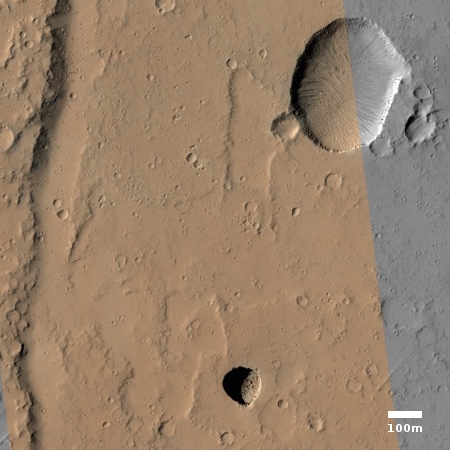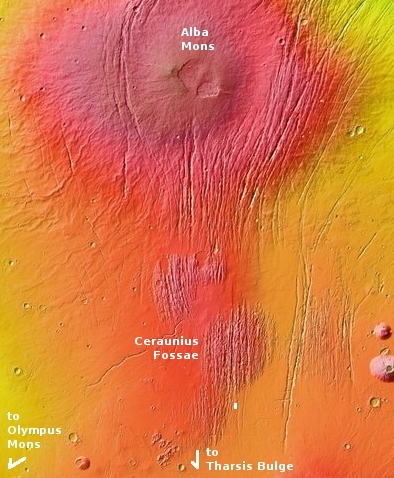Crash site of Vikram found
Using a mosaic of Lunar Reconnaissance Orbiter (LRO) images, citizen scientist Shanmuga Subramanian located on the Moon the debris and impact point for India’s Vikram lander that crashed there in September, an identification that has since been confirmed by LRO scientists.
The image on the right, reduced to post here, has been modified by the scientists to bring out the features that changed before and after the impact.
After receiving this tip the LROC team confirmed the identification by comparing before and after images. When the images for the first mosaic were acquired the impact point was poorly illuminated and thus not easily identifiable. Two subsequent image sequences were acquired on 14, 15 October and 11 November. The LROC team scoured the surrounding area in these new mosaics and found the impact site (70.8810°S, 22.7840°E, 834 m elevation) and associated debris field. The November mosaic had the best pixel scale (0.7 meter) and lighting conditions (72° incidence angle).
The debris first located by Shanmuga is about 750 meters northwest of the main crash site and was a single bright pixel identification in that first mosaic (1.3 meter pixels, 84° incidence angle). The November mosaic shows best the impact crater, ray and extensive debris field. The three largest pieces of debris are each about 2×2 pixels and cast a one pixel shadow.
No word yet on what this new information reveals about Vikram’s failure.
Using a mosaic of Lunar Reconnaissance Orbiter (LRO) images, citizen scientist Shanmuga Subramanian located on the Moon the debris and impact point for India’s Vikram lander that crashed there in September, an identification that has since been confirmed by LRO scientists.
The image on the right, reduced to post here, has been modified by the scientists to bring out the features that changed before and after the impact.
After receiving this tip the LROC team confirmed the identification by comparing before and after images. When the images for the first mosaic were acquired the impact point was poorly illuminated and thus not easily identifiable. Two subsequent image sequences were acquired on 14, 15 October and 11 November. The LROC team scoured the surrounding area in these new mosaics and found the impact site (70.8810°S, 22.7840°E, 834 m elevation) and associated debris field. The November mosaic had the best pixel scale (0.7 meter) and lighting conditions (72° incidence angle).
The debris first located by Shanmuga is about 750 meters northwest of the main crash site and was a single bright pixel identification in that first mosaic (1.3 meter pixels, 84° incidence angle). The November mosaic shows best the impact crater, ray and extensive debris field. The three largest pieces of debris are each about 2×2 pixels and cast a one pixel shadow.
No word yet on what this new information reveals about Vikram’s failure.













